Number 10 in Soccer
This position is typically given to an attacking midfielder or forward who possesses exceptional talent and technique, and is an expert in creating scoring opportunities for their team. The role of the number 10 is crucial in dictating the tempo of the game and unlocking the opposition's defense.
What Does the Number 10 Signify in Soccer?
The history of the number 10 in soccer can be traced back to the 1950s, when the legendary Brazilian player Pelé donned the jersey number 10 shirt for the first time. Since then, many greats of the game have worn the number 10 shirt, including Diego Maradona, Lionel Messi, Ronaldinho, and Zinedine Zidane. These players have set the standard for what it means to be a playmaker, and their contributions to the game have been immeasurable. The number 10 position is often referred to as the "central striker" or "false nine," as the player is responsible for scoring goals in addition to creating chances and providing service for their teammates. They must have exceptional vision and passing ability, as well as the skill to dribble past defenders and shoot accurately from distance.

In addition to their technical ability, a number 10 must also possess exceptional game intelligence and decision-making skills. They must be able to read the game and anticipate the movements of their teammates and opponents, making split-second decisions to create scoring opportunities for those in offensive positions.
The number 10 also carries a significant weight of responsibility both on and off the field. They are often seen as the leader of the team, responsible for setting the tone and leading by example, they are the 'special players'. They must be able to inspire their teammates and maintain a high level of focus and intensity throughout the game.
For aspiring soccer players, the number 10 position should be a target for those looking to make an impact on the game. Developing technical skills such as dribbling, passing, and shooting, as well as improving game intelligence and decision-making, can help players excel in this position.

For coaches, identifying and developing players with the potential to play the number 10 position can be a game-changer for their team. Providing opportunities for players to practice and develop their skills, as well as giving them the freedom to express their creativity on the field, can help to unlock their full potential.
How has the role of the number 10 evolved over time?
In soccer, the number 10 jersey shirt is worn by a player who is known as a playmaker or attacking midfielder and is often seen as carrying prestige. This player is often the most creative and technically gifted member of the team, responsible for creating goal-scoring opportunities for the forwards and wingers.
Over time, the role of the number 10 has evolved to become even more important in modern soccer. They are tasked not only with setting up plays and scoring goals but also with controlling the midfield and dictating the pace of the game, taking some responsibilities from the central midfielder.
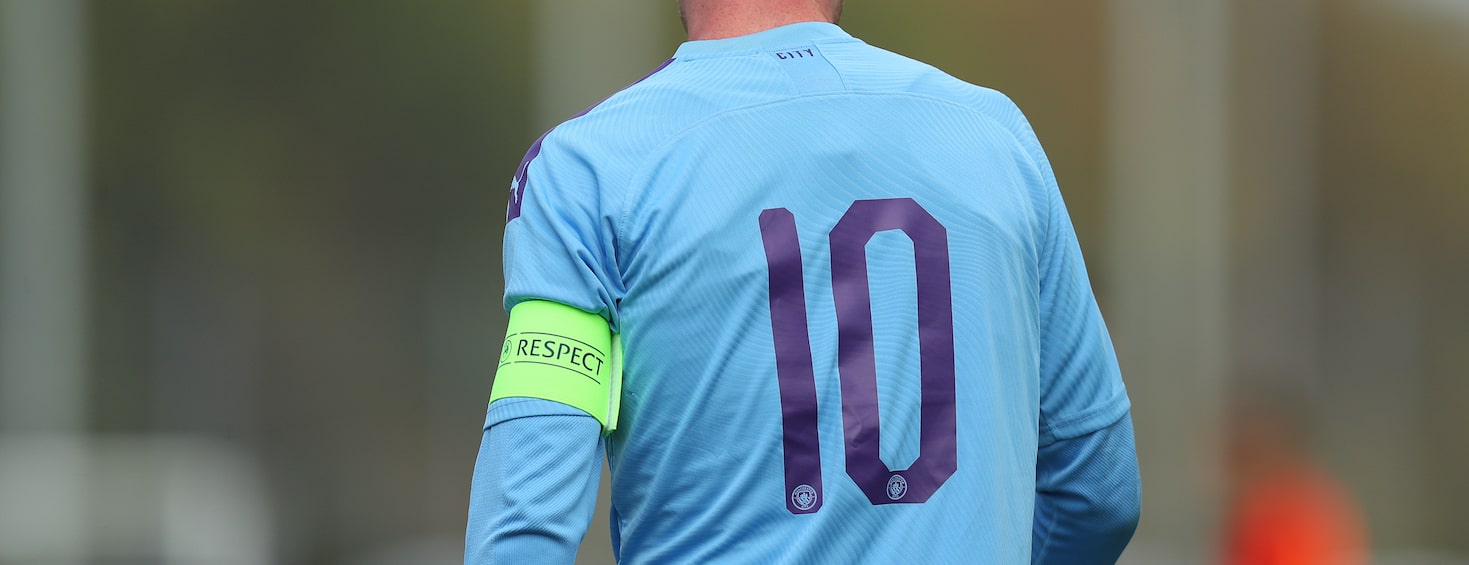
In the past, the number 10 was typically a central striker or goalscorer, but as the game has become more tactical, the role has shifted to a more versatile player that can roam across the midfield and attack from different angles.
Today, the number 10 is often a player with exceptional vision, passing ability, and technique. They are expected to be the creative force behind the team's attack, able to unlock defenses with clever through balls, dribbling skills, and precise crosses.
One of the most famous number 10s in soccer history is Pele, the Brazilian forward who led his team to three World Cup victories. He was known for his exceptional talent and ability to score goals, but also for his creative playmaking skills that made his team better as a whole.

Pele won World Cups as Brazil's number 10
Another famous number 10 is Lionel Messi, the Argentine forward who has won numerous awards and titles throughout his career. Messi is known for his incredible dribbling skills, vision, and ability to score spectacular goals from seemingly impossible angles. He is also a versatile player that can play as a forward on the front line, attacking midfielder, or even as a central striker.
For coaches and players, the number 10 position is a coveted role that requires a unique set of skills and attributes. Players who wear the number 10 jersey shirt must possess exceptional vision, passing ability, technique, creativity, and game intelligence. They must have the confidence to take risks and make split-second decisions that can turn the tide of a game.
Attacking midfielders or playmakers are usually the ones who are given the number 10 jersey shirt, as they are the ones who are responsible for creating scoring opportunities for their team. They are also expected to score goals themselves, making them a threat from all areas of the field. Their versatility allows them to move around the midfield and attack from different angles, making them difficult to mark and defend against.

To excel in the number 10 position, players must work on their technical skills, especially their dribbling and passing abilities. They must also have a good understanding of the game and be able to read the movements of their teammates and opponents. In addition, they must have a strong mental game, as the pressure of performing in such a prominent role can be overwhelming.
For coaches, identifying and developing players with the potential to play the number 10 position can be a game-changer for their team. Providing opportunities for players to practice and develop their skills, as well as giving them
What positions do number 10s usually play?
The number 10 in soccer is a jersey number that holds a special significance. It is usually assigned to the most creative and talented players on the team. The number 10 is associated with the attacking midfielder or playmaker position, which is responsible for creating chances and providing assists to goalscorers.
The number 10 position is traditionally played in the center of the field, just behind the central striker. This position is also known as the "hole" or "pocket", as it is the area of the field where the player can receive the ball and operate freely. The number 10 is responsible for linking up the midfield and the attack, making runs, and providing key passes that can unlock defenses.
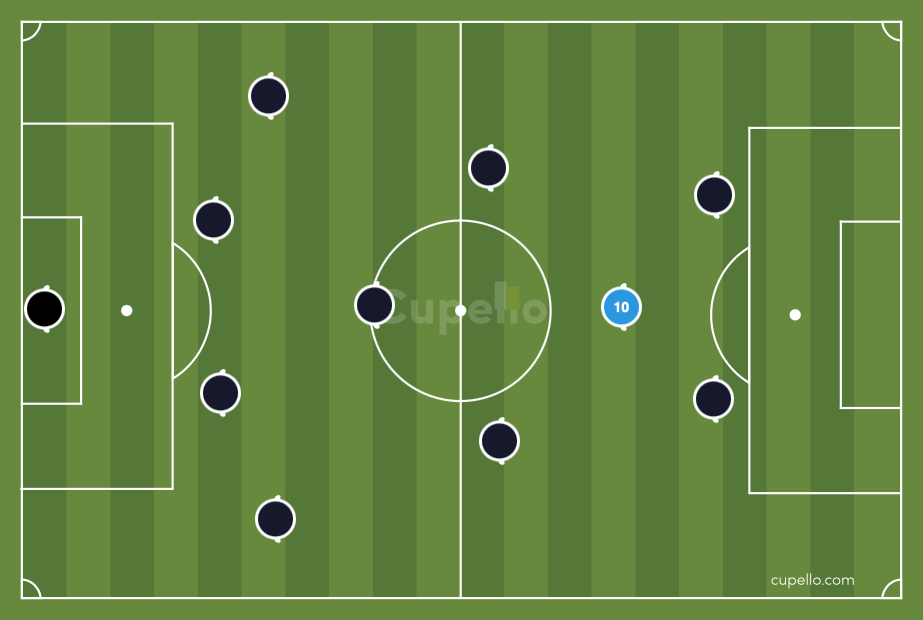
The number 10 plays in between the midfield and strikers
The role of the number 10 has evolved over the years, with some teams even playing without a traditional central striker, and instead relying on the number 10 to score goals. This has led to some number 10s being labeled as "false nines", as they are not necessarily playing as a central striker, but still have a major impact on the team's attacking play.
In general, the number 10 position requires exceptional technical ability, vision, and creativity. Players who wear the number 10 shirt are expected to be exceptionally talented, with the ability to dribble past defenders, make incisive passes, and score goals. They need to have a good understanding of the game, be able to read the play, and make quick decisions.
The Role of the Number 10 Position
The number 10 position is one of the most important roles in soccer. As the attacking midfielder or playmaker, the number 10 is responsible for creating chances and providing assists to goalscorers. They are the players who can change the course of a game with their vision and creativity.
The number 10 is often considered the "brain" of the team, as they are responsible for linking up the midfield and the attack. They need to have a good understanding of the game, be able to read the movements of their teammates and opponents, and make quick decisions. They are the players who can spot gaps in the defense and exploit them with their passes or runs.
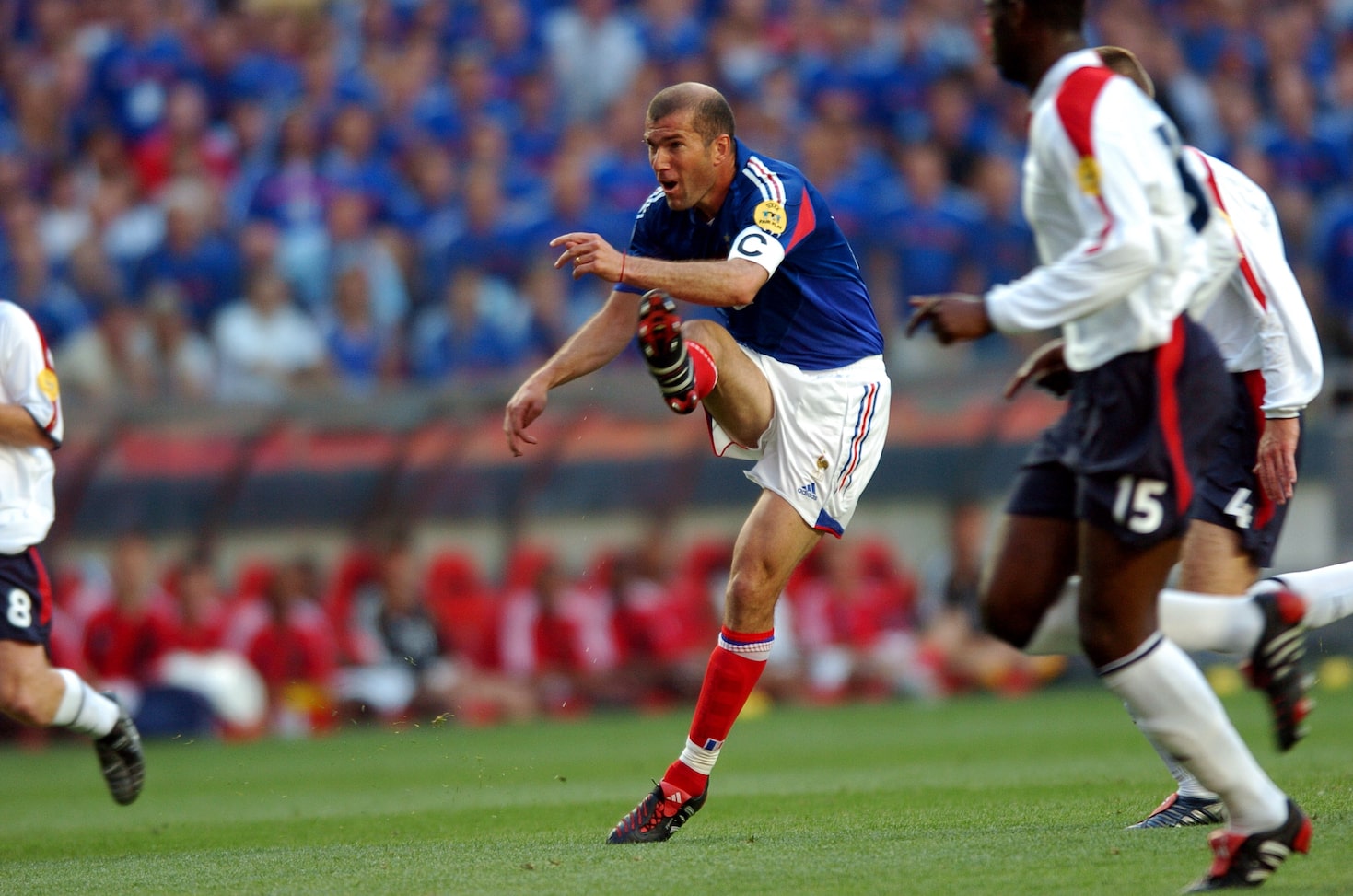
In general, the number 10 position requires exceptional technical ability, vision, and creativity. Players who wear the number 10 shirt are expected to be exceptionally talented, with the ability to dribble past defenders, make incisive passes, and score goals. They must also have a strong mental game, as the pressure of performing in such a prominent role can be overwhelming.
Overall, the role of the number 10 in soccer is crucial to the success of any team. In fact, some of the greatest soccer players of all time have worn the number 10 shirt, including Diego Maradona, Lionel Messi, and Pele. These players have left their mark on the game, showcasing their exceptional skill and talent in the number 10 position.
One of the key responsibilities of the number 10 is to create chances for their teammates. This involves a combination of technical ability and vision, as the player needs to be able to spot openings in the defense and make precise passes to their teammates. Additionally, the number 10 is also expected to contribute to the team's goal-scoring efforts by taking shots themselves.

In order to excel in the number 10 position, players need to have a deep understanding of the game. They need to be able to read the movements of their teammates and opponents, and adjust their own positioning accordingly. The best number 10s are able to anticipate the flow of the game and make quick decisions that help their team maintain possession and create scoring opportunities.
Another important aspect of playing in the number 10 position is leadership. The number 10 is often one of the most experienced and talented players on the team, and as such they are expected to take on a leadership role. This includes guiding their teammates on the field and providing motivation and encouragement when needed.
Skills Required to Play the Number 10 Position
To excel as a number 10 in soccer, players need to possess a wide range of skills. Being technically sound is essential, as the number 10 is expected to dribble past defenders and make precise passes in tight spaces. Having excellent vision and creativity is also a must, as the player needs to be able to read the game and create scoring opportunities for their teammates.
In addition to technical ability, players in this position need to be mentally strong. The pressure of playing such a prominent role can be overwhelming, and the number 10 needs to be able to handle the spotlight and perform at their best under pressure. They also need to have a deep understanding of the game, including the ability to anticipate the movements of their teammates and opponents.
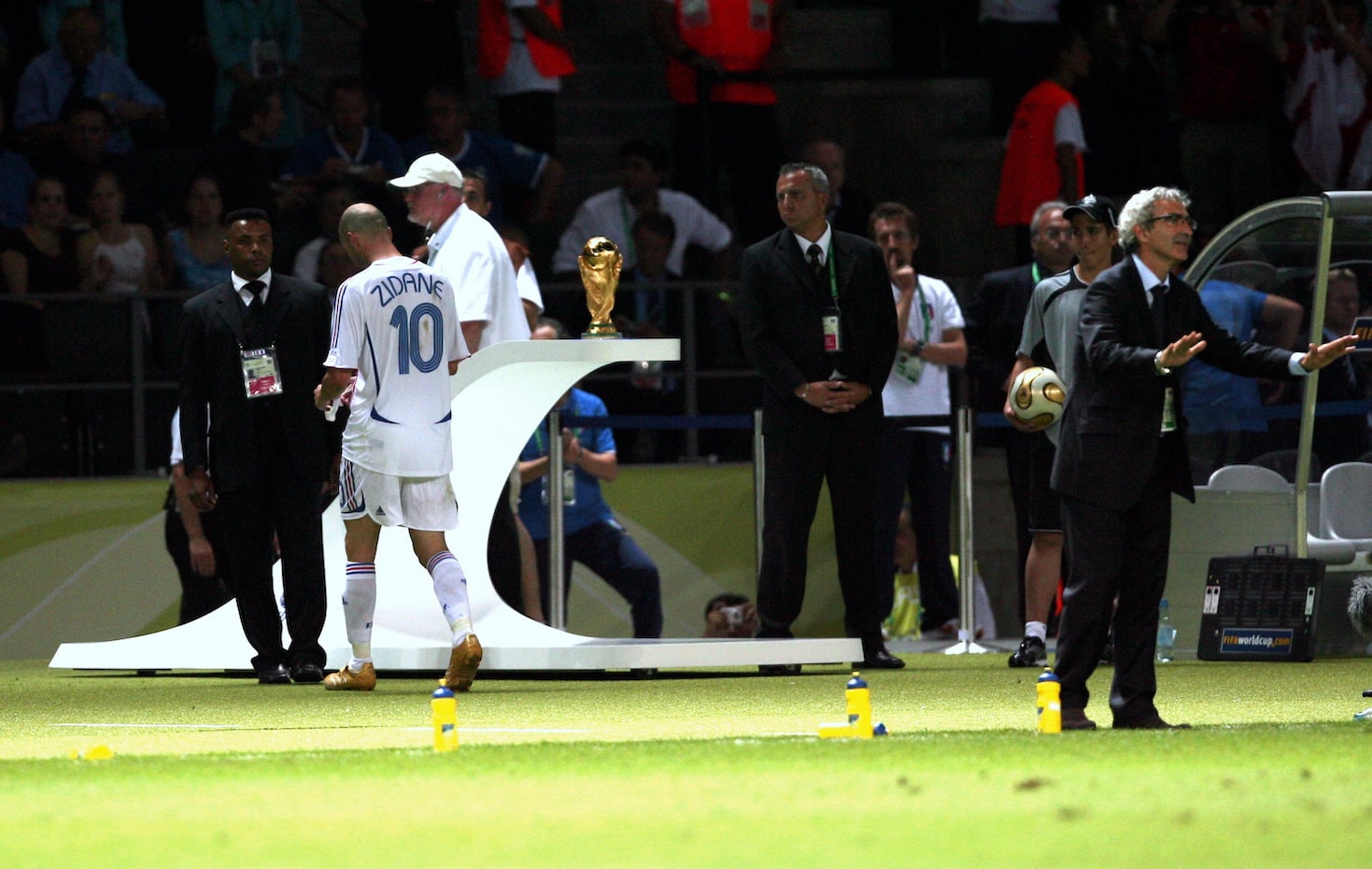
Zinedine Zidane cracked under pressure during the 2006 World Cup Final
Leadership is another important skill for players in the number 10 position. They are often one of the most experienced and talented players on the team, and as such, they need to take on a leadership role on the field. This includes not only guiding their teammates but also providing motivation and encouragement when needed.
Finally, players in the number 10 position need to be comfortable taking on a variety of roles. While their primary responsibility is to create scoring opportunities, they also need to be able to contribute to the team's defensive efforts and be willing to track back and help defend when necessary. Overall, it takes a well-rounded player with a diverse set of skills to thrive in the number 10 position.
How Coaches Can Identify and Develop Number 10 Players
Identifying and developing number 10 players can be a challenging task for coaches. However, there are certain traits and skills that coaches can look for when scouting for potential candidates. One important factor to consider is a player's technical ability. A good number 10 player should be skilled in dribbling, passing, and shooting. They should also have a good understanding of the game and be able to make quick decisions on the field.
Another important trait to look for in number 10 players is creativity. These players should have the ability to create scoring opportunities out of nothing and have a good eye for making passes that split the defense. They should also be comfortable taking risks and trying new things on the field.

In addition to technical ability and creativity, coaches should also look for players who have a strong work ethic and a positive attitude. Number 10 players need to be mentally strong and able to handle the pressure that comes with playing such a prominent role on the team. They should also be willing to put in the hard work and effort required to succeed at the highest level.
Once coaches have identified potential number 10 players, it's important to focus on developing their skills and abilities. This can be done through individualized training sessions that focus on specific aspects of the game, such as dribbling, passing, and shooting. It's also important to provide these players with ample playing time and opportunities to showcase their skills in game situations.
Ultimately, developing a strong number 10 player takes time, effort and a natural level of class.
Examples of Legendary Number 10 Players in Soccer History
When it comes to legendary number 10 players in soccer history, there are many names that come to mind. From current stars like Lionel Messi and Neymar Jr. to all-time greats such as Diego Maradona and Zinedine Zidane, these players have left an indelible mark on the sport. One player who also deserves mention in this category is Wayne Rooney.
Rooney is a former England international footballer who played for Manchester United, Everton, and DC United. He is considered one of the greatest players in the history of English football, having won numerous titles and accolades throughout his career. Rooney was known for his versatility on the field, having played in various positions throughout his career, but he was perhaps most famous for his performances as a number 10.

Playing just behind the striker, Rooney was able to use his technical ability, vision, and creativity to create chances and score goals. He was a master at playing one-touch football, and his passing and shooting skills were second to none. He was also known for his work rate and his ability to track back and defend when necessary, making him a well-rounded player.
Rooney's career highlights include winning five Premier League titles, one Champions League title, and one Europa League title with Manchester United. He is also the all-time leading scorer for the English national team and is one of only two players to have scored over 200 goals for Manchester United.
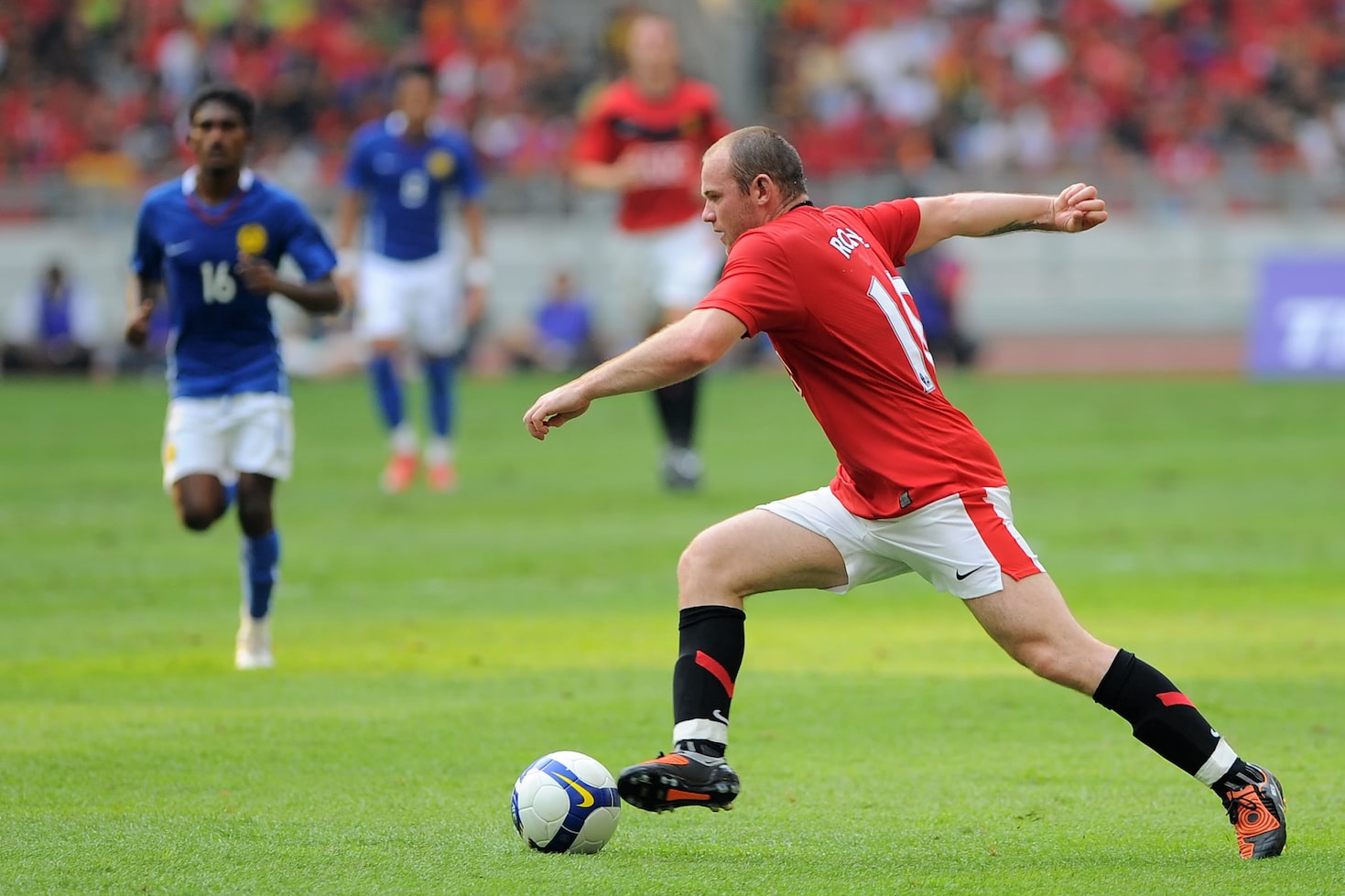
Overall, Wayne Rooney is a prime example of a legendary number 10.
Another famous number 10 player in soccer history is Neymar Jr. The Brazilian superstar has made a name for himself with his incredible dribbling skills, ball control & footwork, and ability to score stunning goals. However, being a top-level number 10 player also comes with its challenges.
One of the benefits of having a player like Neymar in your team is his ability to create scoring opportunities out of nothing. He has a natural flair for the game and can mesmerize defenders with his dribbling skills, which can open up space for his teammates to exploit. Neymar is also an excellent finisher and can score goals from various angles and distances.

However, one of the challenges of having a player like Neymar is his tendency to be selfish with the ball. As a number 10 player, he is expected to create scoring opportunities for his teammates, but at times, he can hold onto the ball for too long or try to do too much on his own. This can lead to missed opportunities and frustration amongst his teammates.
Another challenge with Neymar is his tendency to dive or exaggerate contact to win free-kicks or penalties. This behavior can be frowned upon by referees and can result in yellow cards or even red cards for simulation. It can also harm the reputation of the team and the player.
In conclusion, while having a player like Neymar on your team can bring many benefits, it is essential to manage him correctly and ensure that he plays for the team's benefit and not for himself.


Improve Your GameJust 1.99 p/m
Exclusive drills and sessions, get involved today!
- 100’s of Drills
- Coach to Camera Videos
- Sessions from Pro’s
- Industry Leading Advice
Number 10 Position in Soccer
Conclusion
In conclusion, the number 10 position in soccer is crucial for any team looking to create scoring opportunities and dominate their opponents. As we have seen with the examples of Wayne Rooney and Neymar Jr., having a player who can seamlessly transition between attacking and defending is essential. A successful number 10 player not only possesses technical skills but also has a high work rate and can track back to defend when necessary.
While there are challenges that come with having a player like Neymar on your team, the benefits he brings outweigh the negatives. It is up to the coach and the team to manage the player correctly and ensure that he plays for the team's benefit and not just for himself. In the end, the number 10 position can make or break a team's success, and having a talented and well-managed player in that position can lead to championship trophies and unforgettable moments on the pitch.

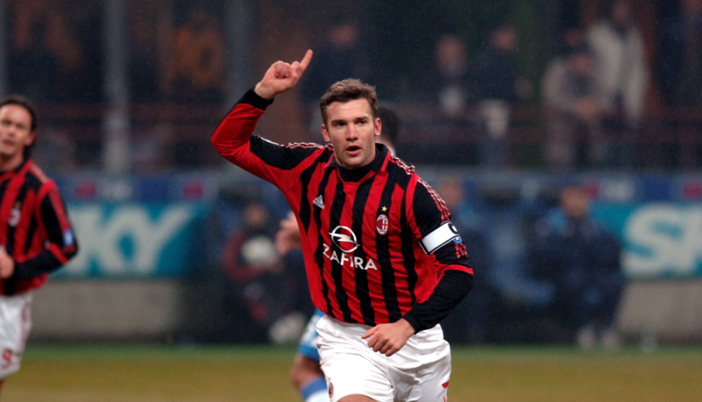
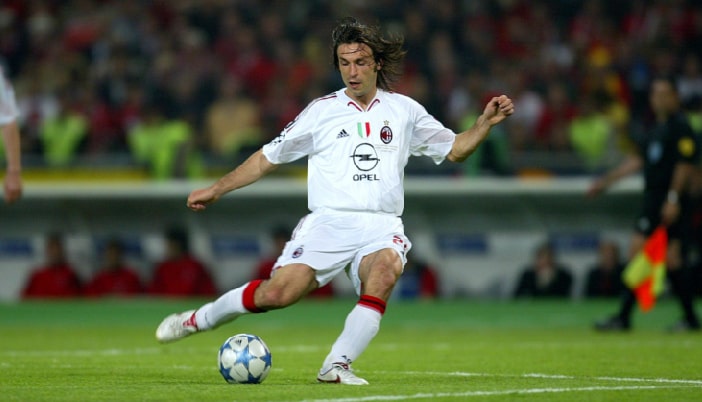
Cupello
Rethinking soccer coaching via our industry leading tools. Built to offer effective coaching development solutions for players and coaches of all levels.